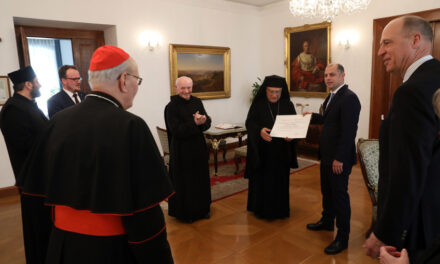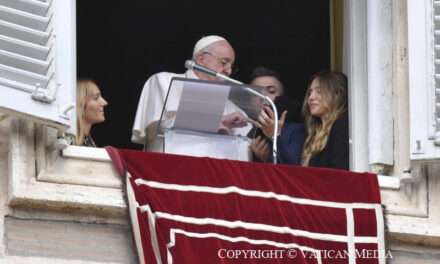A unique series of cartoons is being made about the lives of Hungarian saints and their spiritual struggles. The creator of the large-scale work is Sándor Békési, a reformed theologian and cartoon director. vasarnap.hu conducted an interview with him, from which we will also publish some details.
Sándor Békési: – I used to say that cartooning is my profession and theology is my vocation. After a long time, to my great surprise, I received an invitation Ferenc Mikulás , who runs Kecskemétfilm, . I am very grateful for his special courage, since after so many decades without animation, he still trusted me and agreed to write, design and direct the film series myself.
– Could you tell us a little about the confessions of the Hungarian saints, what kind of series will this be?
– According to the plans, a 13-part cartoon series entitled Confessions of the Hungarian Saints. It will only consist of 9-minute episodes, but it is just long enough for the ever-current main character to articulate all the spiritual struggle he had to fight between temptations and tests during his life path in his prayer just before his death. This biographical series is not intended to be a historical tableau with a colorful presentation of the world of the Middle Ages, but quite the opposite: we are trying to penetrate into the heart of the main character and describe his serious religious struggle in a visual way , and at the same time we want to talk honestly about the essence of the Christian faith instead of the surface. To this end, the visual world of the film is simplified into graphics drawn with black lines, with elements bearing gold and black spots. Sometimes only with the red color of blood and heart, so that the significance of the text of the prayer is not overwhelmed by the sight.
The play of colored lights is reserved for the heavenly world, as if compensating the black and white earthly with heavenly brilliance. As for the spoken text, two people always speak in the episodes. The saint reciting his prayer and an invisible angelic voice conveying biblical quotes related to the life story in archaic Székely vernacular.
– To what extent is it possible to authentically create the inner struggle of a medieval person, what sources and experiences could he draw on?
- Whether you live in the Middle Ages, ancient times or today, the inner struggle of a person who believes in God is valid for all time and is shown and set by the Holy Scriptures, whether they are the fiery sentences of the prophets, the teachings of Jesus Christ or the letters of the Apostle Paul. In the episodes, we will often come across quotes from these through the intervening angel. Furthermore, the personal wordings of contemporaneous testimonies, letters and saints' biographies are incorporated into the spoken texts of the saints. Thus, for example, we can recall not only the actions of St. Margaret and St. Elizabeth, but also their own words. In the legends of the saints, the emphasis is not on the theatrical display of miraculous elements, but on the unfolding of the personal decisions of the saints behind the miraculous events. I also try to show the world view of the medieval man in the film series, which is manifested in the compensation of the kingdom of God and the earthly world, the man longing for God and the devilish temptation that appears everywhere, the soul and the body. On the other hand, by showing the death of the saints and the immortality of the soul, the suffering undertaken for others and constant prayer, I would like to draw the attention of the film's viewers to the life of faith that was considered exemplary in the Middle Ages. Of course, you are excited to see how well it all works out?
Among the 13 lives to be presented are primarily the saints of the Árpád family, such as Kings Saint Stephen and Saint László Saint Imre , and then the great female role models of the world at that time: Saint Elizabeth and Saint Margaret , as well as Saint Little Red Riding Hood and Saint Kinga . Among the saints outside the Árpád House will be St. Hedwig of Anjou , St. Gellert , Blessed Mor , St. Margaret of Scotland , Blessed Özséb , and St. John of Capistran.
The full article can be read here.
(Cover image source: Kecsekmétfilm Kft)












